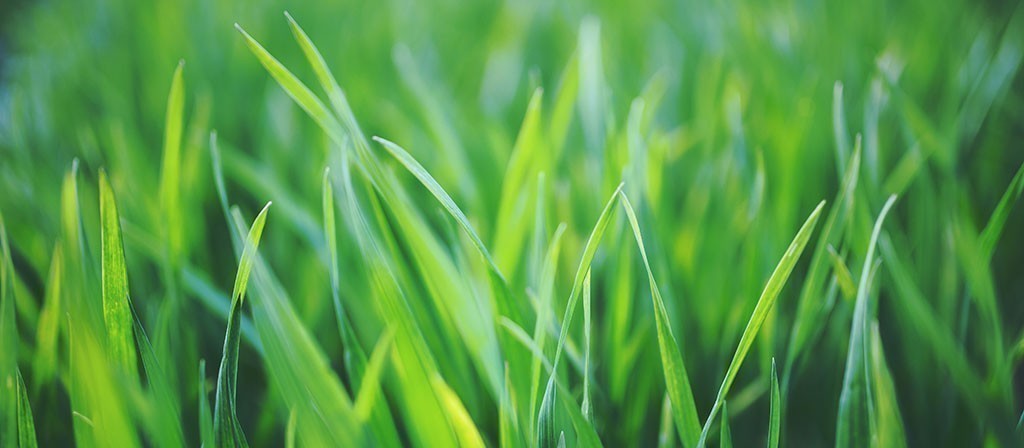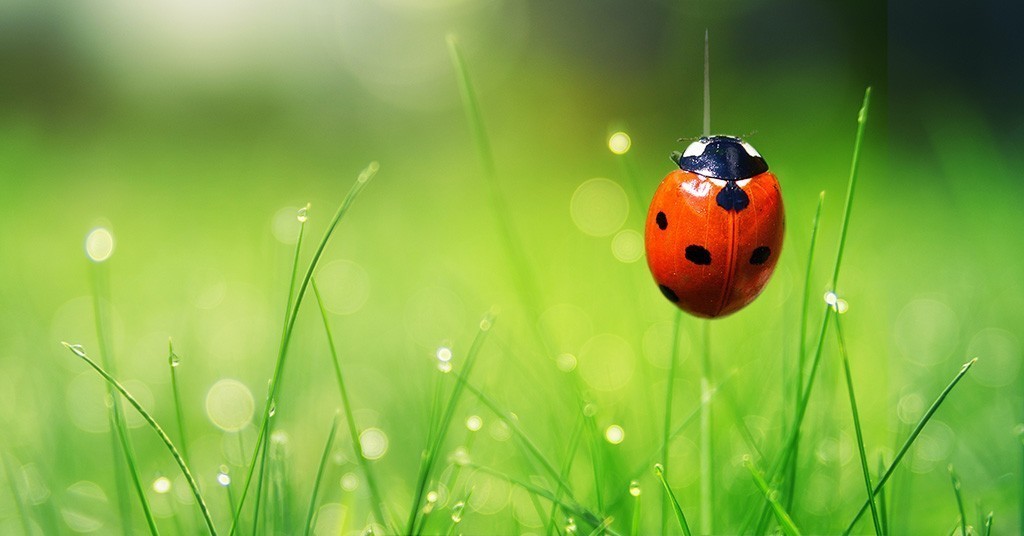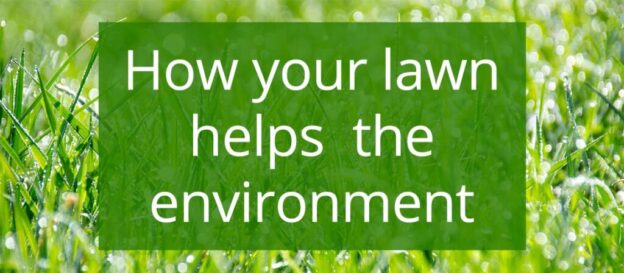When you choose to have a natural grass lawn, your decision has a significant environmental impact — one that’s overwhelmingly positive. Natural grass lawns are sustainable, environmentally sound choices that contribute to environmental health and stability. By choosing to plant grass and improve your lawn’s sustainability, you can enjoy its natural beauty along with these environmental benefits:
Oxygen production and carbon dioxide reduction
Lawns aren’t usually thought of as collections of thousands of oxygen-producing plants, but that’s exactly what they are. Like all plants, grass plants in your lawn take in carbon dioxide from the air. Then, as part of the process of photosynthesis, those grasses help produce the oxygen you breathe.
Healthy lawns are remarkably efficient at oxygen production. A 25-square-foot area of healthy lawn grasses produces enough oxygen each day to meet all the oxygen needs of one adult.1 Lawns also annually take in about 5% of the carbon dioxide in the earth’s atmosphere, which helps reduce the potential for global warming.2
Erosion control and water quality preservation
A healthy, thick lawn is one of the most effective controls against soil erosion from water or wind. A single grass plant grown under ideal conditions has over 300 miles of roots.1 Extensive root systems on healthy grass plants hold soil in place, while grass blades protect topsoil against eroding wind and rain.
Dense turf also reduces runoff that sends water, soil and pollutants from neighbouring roadways into streams and storm sewers to near zero, in all but the most intense rain events.3 Healthy grasses absorb water, help filter out pollutants such as those in acid rain, and recharge groundwater reserves and natural aquifers instead. Thick, healthy lawn grasses can help soil absorb six times the water of erosion-controlling crops such as wheat.1
Improved air quality and soil structure
Along with carbon dioxide, lawns capture air pollutants such as dirt, dust, allergens and more serious pollutants. In the United States alone, turf grasses rid the air of an estimated 12 million tons of impurities every year, breaking down pollutants and restoring dirt and dust to the soil.1,3
When properly nourished and maintained, natural lawn grasses encourage beneficial microorganisms in soil. They also produce beneficial organic matter that improves the soil’s health and structure.3 Healthy soil leads to healthy grass, which enhances all the environmental benefits lawn grasses produce.
 Thick, healthy lawns absorb rain and reduce runoff.
Thick, healthy lawns absorb rain and reduce runoff.
Temperature modification and cooling effects
When heated by the sun, lawn grasses cool themselves through a natural process called transpiration, which lowers grass temperatures through evaporation. Air temperatures over concrete or similar surfaces on sunny days can be more than 14 degrees Fahrenheit hotter than the temperature above natural grass lawns.1
This cooling effect explains why grass feels so good on a hot summer day, but the benefit extends to your home. An average front lawn can have a cooling effect equal to nearly nine tons of air conditioning.1 In comparison, surface temperatures of artificial turf can exceed natural grass temperatures by more than 80 degrees in the same conditions.4
 Natural lawns help support the ecosystem around your home.
Natural lawns help support the ecosystem around your home.
Sources:
- Maryland Institute of Applied Agriculture, “Maryland Turfgrass Survey: An Economic Value Study” University of Maryland, 1996
- Qian, Y. L., R. Follett and J. Kimble, “Assessing Soil Carbon Sequestration in Turfgrass Systems Using Long-Term Soil Testing Data” Soil Science Society of America Journal, 2010
- Sustainable Urban Landscape Information Series, “Environmental Benefits of a Healthy, Sustainable Lawn” University of Minnesota Extension
- Williams, C. Frank and G. E. Pulley, “Synthetic Surface Heat Studies” Brigham Young University, 2002

